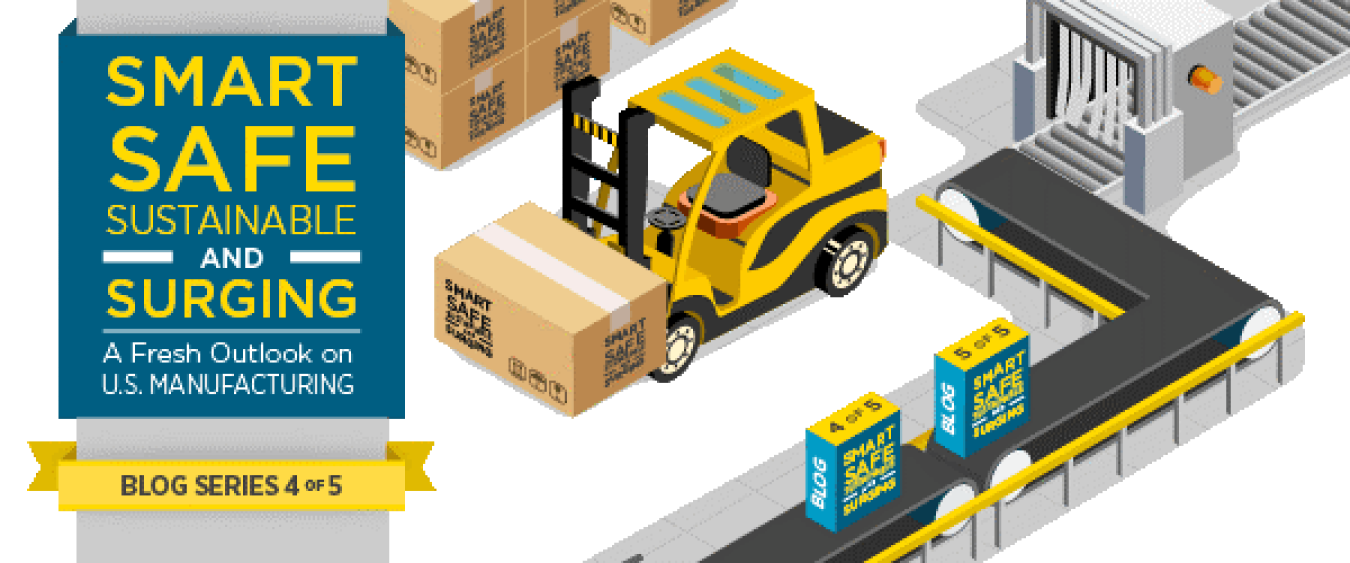
Welcome to the New Year. Before looking forward to the future of advanced manufacturing, let's take quick look back to highlight our historical strengths.
Manufacturing has been a foundation for our economy and a major catalyst for innovation since the beginning of our nation. Manufacturers perform more than three-quarters of all private-sector research and development (R&D) in the nation, driving more innovation than any other sector. In doing this work, private-sector investments often leverage public-sector investments as a way to reduce the scientific uncertainty and expand the adoption of new technologies and practices. With more than 12 million Americans working directly in manufacturing, public investments in technology innovation and training go hand in hand to support the manufacturing workforce and increasing our nation’s competitiveness. To meet these needs, technology innovation is an essential footing for the stakeholder community of the Advanced Manufacturing Office.
Looking forward, we see a growing commitment to advanced manufacturing innovation across the nation and we have seen the emergence of regional ecosystems in support of this need for technology innovation. These regions are establishing themselves as fertile areas for the research, development, and manufacturing of revolutionary new technologies, particularly in energy. Much in the way Detroit is known as a center for automotive manufacturing and Silicon Valley is known for innovation in information technology, regions across the country are establishing expertise and focus in advanced manufacturing. This regional identity helps focus research institutions, industry, and government in those places to come together in cohesive partnerships. They build shared innovation infrastructure in their areas to achieve place-based innovation. The result is that talented people with advanced manufacturing know-how that can be paired with tools and economic resources to achieve their goals.
For example, Eastern Tennessee has become known as a technology corridor for composites and 3D printing. Oak Ridge National Laboratory’s (ORNL) Manufacturing Demonstration Facility (MDF) and Carbon Fiber Technology Facility (CFTF) have become science and technology anchors for the region and have encouraged companies like LeMond Composites and Local Motors to open facilities and bring new jobs to the region. Building on this foundation, the Institute for Advanced Composites Manufacturing Innovation (IACMI), led by the University of Tennessee-Knoxville, boosts the region’s composite manufacturing industry and helps identify opportunities to train the future workforce in the capability, power and versatility of these materials. Through their partnerships, IACMI is bringing the same regional innovation focus for composite manufacturing in Detroit, MI; West Lafayette, IN; Dayton, OH; Golden, CO; Long Island, NY; and Port Angeles, WA.
Another example of regional innovation in energy technology builds on the national laboratories’ reputation for excellence in high performance computing (HPC) and the Bay Area’s excellence in information technologies. Lawrence Livermore National Laboratory and Lawrence Berkeley National Laboratory, both located near San Francisco, are two of the leaders of the AMO supported High Performance Computing for Manufacturing (HPC4Mfg) program. This program utilizes the world-class supercomputers and the expertise of national laboratory scientists to address energy related challenges faced by manufacturers across the nation. They use HPC to model, simulate, and analyze real industrial products and processes, particularly to address energy-intensive and energy-dependent manufacturing problems. The resulting insights and knowledge have the potential to enable manufacturers across the country become more efficient, productive and competitive. By comparing their models with the results in real-world manufacturing process, the computer scientists improve their models and simulations with the potential to advance HPC innovation even further. This demonstrates the positive feedback that comes through innovation partnerships.
The Research Triangle in North Carolina, anchored by North Carolina State University, Duke University, and University of North Carolina – Chapel Hill, is known as an innovation hub full of cutting-edge research institutions, high-tech startups, and global companies. It is also the home to PowerAmerica, a Manufacturing USA institute geared toward advancing wide bandgap semiconductors in power electronics. Power electronics are a building block for energy systems of the future as intelligence becomes imbedded in the networks of abundant, secure and affordable electrical resources of the nation. Innovation in the manufacturing of power electronics will be a key to ensuring we can efficiently and responsibly harness these energy resources. To support this need for innovation, PowerAmerica builds on the strong academic culture of the Research Triangle and fosters industry collaboration to revolutionize the way electricity is used in power electronics.
These are just a few examples of regions identified for their innovation in advanced manufacturing. It is important to remember that while they are locally based, these place-based innovation ecosystems also serve, support and partner with a broader community of manufacturers across the country. This culture of innovation supports stakeholders of all shapes and sizes who contribute to the thriving culture of excellence that helps keeps U.S. advanced manufacturing competitive.
You can find the previous installments in this series here.
To get blogs like this directly to your e-mail inbox, subscribe to Advance Manufacturing Office News Updates here.


